In the previous series all about knees, I shared resources for my recovery journey after a major knee surgery. In this new series, I will be sharing things you can do to help keep boredom at bay, because the recovery process for any major surgery can be a long, painful and tedious one. The pain and lack of mobility is frustrating, and limits your access to things you can do to pass the time. Minutes pass by like hours. ‘Recovered’ seems a lifetime away.
I will begin with depression after knee surgery and how to cope, as I believe that mental health is of utmost importance. When you feel anxious and depressed, it is easy to spiral downwards into a vicious loop that affects your physical health. It can also impact your motivation to keep up with your physiotherapy and self-care. This post is also a great resource for anyone who’s bed bound, stuck at home for whatever reason, feeling restless, anxious or bored. (You can view the full series at the end of the post!)
P.s. If you have any additional good suggestions on things to do while recovering from knee surgery, leave a comment and I’ll add it in and credit you! 🙂
Pin to Your Mental Health & Surgery Boards:
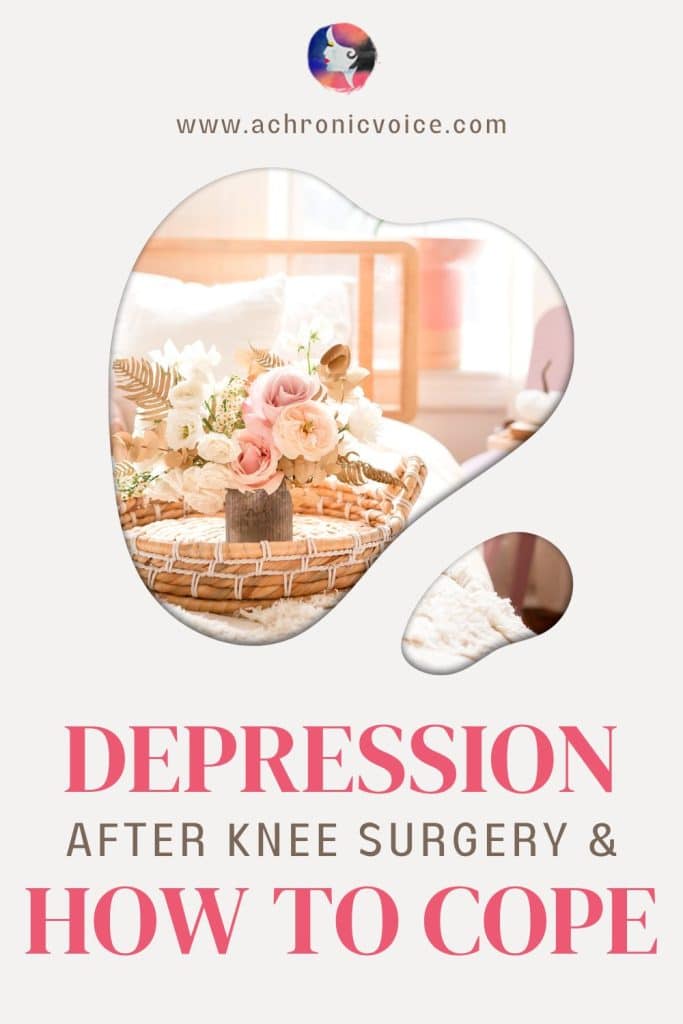
Disclaimer: Knee injuries and surgeries, or any surgery for that matter, varies widely from person to person. Your age, lifestyle, weight, circumstances, medications, comorbidities, allergies and other issues can impact your recovery timeline, as well as the tools and methods required. They should be adapted for YOU.
This article, and the resources or suggestions provided within, are based on MY own personal experiences with a spontaneous bilateral patellar tendon rupture, as a person with many chronic illnesses. They are meant for educational purposes and not to be substituted for medical advice. Please consult your own medical provider before trying anything out.
This post also contains affiliate links. It will cost you nothing to click on them. I will get a small referral fee from purchases you make, which helps with the maintenance of this blog (approx. $100/month). Thank you!
Items with a star ⭐ next to them are resources I’ve personally tried and would recommend!
Post Updated (12 February 2024): Split into separate sections for easier reading.
Table of Contents
1. Keep Calm & Meditate
I’m not quite into meditation, but it’s scientifically proven to have benefits for your mental well-being. Whilst it may not take away your pain, it can still help with depression after knee surgery, and also to be less anxious and more self-aware.
My friend, Melissa, is a yoga teacher who lives with Fibromyalgia. She is passionate about accessible yoga, which can be done even from bed. You can also listen to my interview with her on the Sick Lessons podcast here.
Sign Up for a Mindfulness-Based Stress Reduction (MBSR) Course Online
If you can’t sleep, a body scan meditation can be relaxing. Here is a 10-minute body scan video on YouTube by Jon Kabat-Zinn, who is an American professor emeritus of medicine, and creator of the “Mindfulness-Based Stress Reduction” (MBSR) programme.
According to Niazi, A. K., & Niazi, S. K. (2011):
“Mindfulness Based Stress Reduction (MBSR) therapy is a meditation therapy, though originally designed for stress management, it is being used for treating a variety of illnesses such as depression, anxiety, chronic pain, cancer, diabetes mellitus, hypertension, skin and immune disorders.”
Whilst MBSR is not a cure, there is also evidence that it can be beneficial for your over all well-being. MBSR courses generally run for 8 weeks. Here are recommended institutions to register at, and sound clips for simple meditation exercises, compiled by the Yale School of Medicine.
Jon Kabat-Zinn has also written many books on mindfulness for various purposes. There are books for beginners, mindful eating, depression, why it’s important, and more. You can take your time to browse all of his books here.
Buy Books by Mindfulness & Meditation:
2. Connect with a Mental Health Therapist
It would be strange if you did not feel upset, angry or sad after a major knee surgery (or any surgery). After all, parts of your identity and abilities have been altered. Your mental health is definitely going to take a blow, and it’s not ‘wrong’ or ‘bad’ to feel anxiety or depression after knee surgery.
My own psychiatrist did video consultations with me as it was more convenient that way. She works closely with my healthcare team as well. For those who do not have a therapist on your own healthcare team – request for one. If your request is refused, there are also a few mental health professionals you can reach out to online. They communicate via video calls, emails, and even text messages.
“It would be strange if you did not feel upset, angry or sad after a major #KneeSurgery (or any #surgery). After all, parts of your #identity & abilities have been altered. Your #MentalHealth is definitely going to take a blow.” #spoonie Click To TweetOnline Mental Health Therapist Platforms (Pros & Cons)
Popular mental health therapy platforms online include Better Help and Talk Space. Do note that there is some controversy to using such platforms; Mental health is such an intimate thing, and conversing behind a screen literally screens away some of the social cues.
Personally, I prefer in-person psychology sessions as it provides more space, context and connection. But such mental health platforms can be useful for those who are unable to leave their homes easily. Seeing a private psychologist in-person can also be costly. It is still better to reach out for help than not though, especially when you’re struggling with depression after knee surgery. Every bit of support helps.
In Singapore, there’s The Therapy Co, which allows you to connect with qualified mental health professionals. The platform is founded by Sarah Poh. She is a psychotherapist whom I got to know, surprisingly, through an SEO course instructor.
Reach Out to Your Loved Ones for Moral Support
Alternatively, you can reach out to a friend or family member. Whilst they may not be professionals, sometimes just thrashing things out helps.
Often, those who are depressed lack even the motivation to help themselves. This includes doing the work to find and arrange an appointment with a mental health therapist. They may also feel embarrassed or guilty for needing to see one. The costs for knee surgery and items needed whilst recovering can be hefty already, and a mental health therapist may seem like an ‘unnecessary expense’.
But let me get this straight – seeking help for your mental health is not a luxury, but a necessity. You cannot function to the best of your abilities when your mental health is in disarray. Don’t let societal stigma or internalised ableism stop you from getting the help you need.
“Seeking help for your #MentalHealth is not a luxury but a necessity. You cannot function to the best of your abilities when it’s in disarray. Don’t let societal #stigma or internalised #ableism stop you from getting the help you need.” Click To TweetPin to Your Mental Health & Post-Surgery Boards:
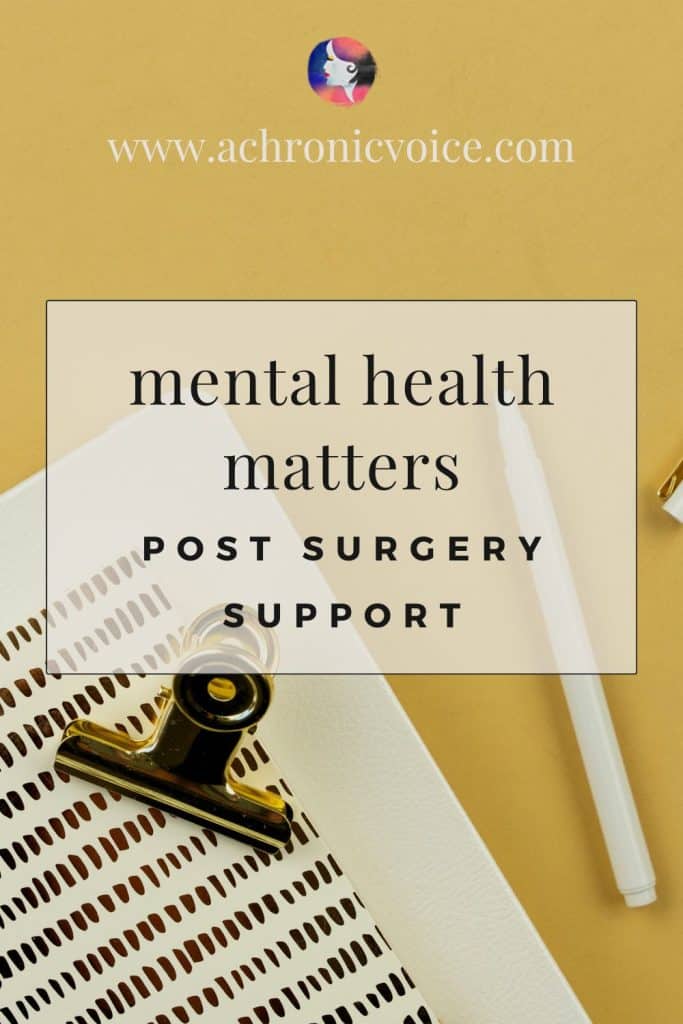
Mental Health Apps
If you still feel that therapy is ‘not your thing’, you might want to look into a digital app. Such apps have a lot of resources to help with pain management, stress and mental health issues. They contain many tips, self-reminders, exercises, articles and tools. It’s like a pocket-sized toolkit which you can pull out and use as needed.
Once again, remember to do your research on the company, and don’t use apps to self-diagnose. Mental healthcare is ‘trendy’ these days and sadly, some companies are just out to make a profit. That doesn’t mean that there aren’t some genuine founders out there – you just need to find them, and find what suits you best.
3. Start a Gratitude Jar
This is really easy to get started. All you need is a sealable jar or container, a pen and some paper. Then you write one thing you’re grateful for every day and pop it in. Over time, the notes stack up. When you’re feeling down, you can pour them out, unfold and read them for some cheer. Look at it as ‘saving inspiration for a rainy day’. Gratitude is powerful (Kelly IV, J. D., 2016), and a shift in perspective can often turn a bad day into a slightly better one.
There are also pre-written affirmation notes that come in a jar, and they’re a bit like fortune cookies. Depression after knee surgery can impact your motivation, so these can be useful for days when you don’t know what to say or think. Some of these can also serve as reminders for things we may have forgotten, because we’re not in a good mental state.
Pin to Your Self-Care, Knee Surgery & Chronic Pain Boards:
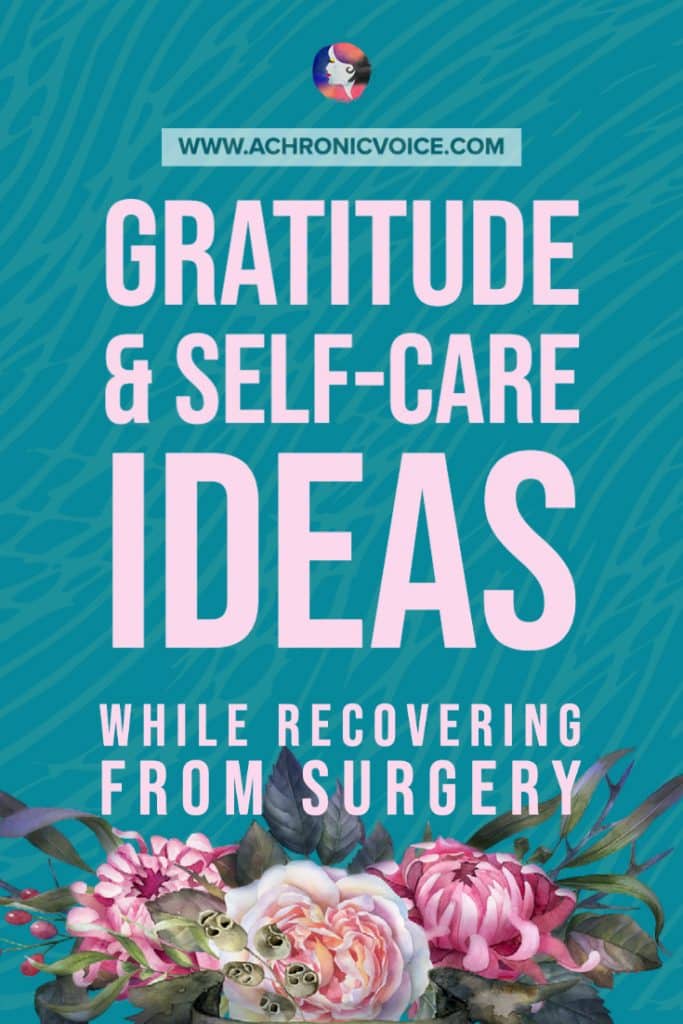
Types of Gratitude Jars & Affirmation Notes:
4. Chat with Online Friends in the Chronic Illness & Disabled Community
You are never alone in your recovery journey – never forget that. There are many others with chronic illness and disabilities out there. Some of them may also be experiencing anxiety and depression after knee surgery. Even if they may not be experiencing the same injury or surgery as you are, they understand the physical and mental toll it takes on a person.
According to Tsai, S. et al. (2018):
“Study findings extend the current understanding about online blogging as an avenue of social support by identifying the use of a VOSS by bloggers and blog readers which enables the establishment of a virtual “community”. It provides a conceptual understanding of how bloggers and readers who share experiences of chronic pain can establish relationships. Through sharing experiences of different offline environments related to pain, blog users are able to engage in a sequence of steps leading to experiences of virtual social support.”
I have a chronic illness group of friends on Facebook Messenger, and we check in on each other regularly. They too, are going through horrendous health problems. Shruti’s brain is sagging, whilst Claire lives with MCAS and other painful chronic conditions. It’s comforting to chat with them, as topics that other people may find ‘morbid’ or ‘disgusting’ are normal to us. We discuss bowel movements, death and bleeding as if it were normal, because it is our normal.
“You are never alone in your #RecoveryJourney – never forget that. There are many others with #ChronicIllness & #disabilities..who understand the physical & mental toll it takes on a person.” #community #ChronicPain Click To TweetFind the Right Community For You
So reach out for support, in whatever form that looks like to you. I personally dislike in-person meetup support groups. But if that’s your preference, you can arrange to attend one. That can be something on your calendar that you look forward too. It may be troublesome with the extra logistics, but worth it for your mental health.
Otherwise, there are many online support groups out there, whether you’re looking for general support, or for a specific condition. They can be found on all the social media platforms, charity websites, or even pen pal groups! I am an admin of the Chronic Illness Bloggers network, and also run a Facebook Group, “Chronic Illness Social Pod”. Admittedly, I haven’t had the time to run it properly though.
Just remember that not all chronic illness communities are a good fit for you. Some can be overly negative, or even veer towards toxic positivity, which would only worsen your depression after knee surgery. So do screen them properly to see if they will be helpful for you. We all have different support needs and preferences.
Unintended Benefits of Joining a Support Group
An unintended benefit from joining a support group is that often when you reach out for support, you end up supporting someone else too. And that’s always a good, fulfilling feeling. Just because you’re suffering, it doesn’t mean that you can’t help someone else, whether intended or otherwise.
“An unintended benefit from joining a #SupportGroup is that often when you reach out for #support, you end up supporting someone else too..Just because you’re #suffering, it doesn’t mean that you can’t help someone else.” #ChronicallyIll Click To TweetPin to Your Mental Health, Community & Chronic Pain Boards:
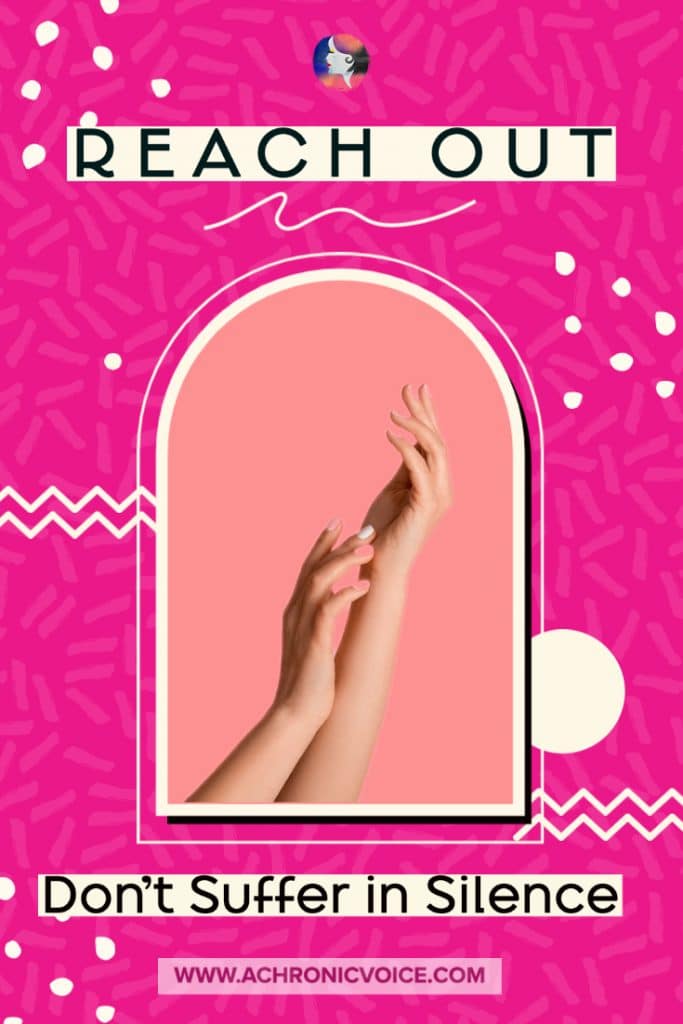
Conclusion to Depression After Knee Surgery – Focus on What You Can Do & Let Time Do Its Work
I hope that this list gives you some ideas for ways to support your own mental health, especially if you’re dealing with depression after knee surgery. Some of these activities may sound fun, but we know that the reality is that it will still be an arduous recovery journey. The recovery timeline for a major knee surgery is also highly variable. That unpredictability can be extra frustrating. How long will you take to heal? How much function can you regain?
As always, only time will tell. So focus on what is within your control, and take care of your entire well-being, from the physical to mental, emotional and even spiritual aspect. Doing so creates a positive cycle, and working on one part of your well-being impacts all other aspects as well. All this ultimately contributes to your recovery process. Wishing you a speedy recovery, and the best possible results!
Pin to Your Depression, Mental Health & Knee Surgery Boards:
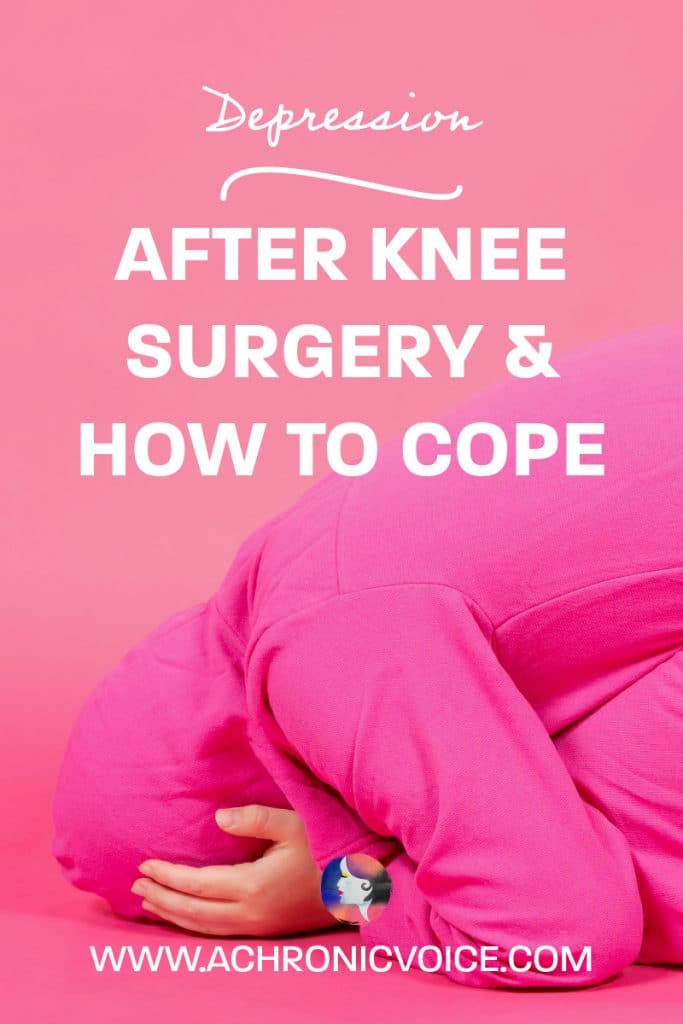
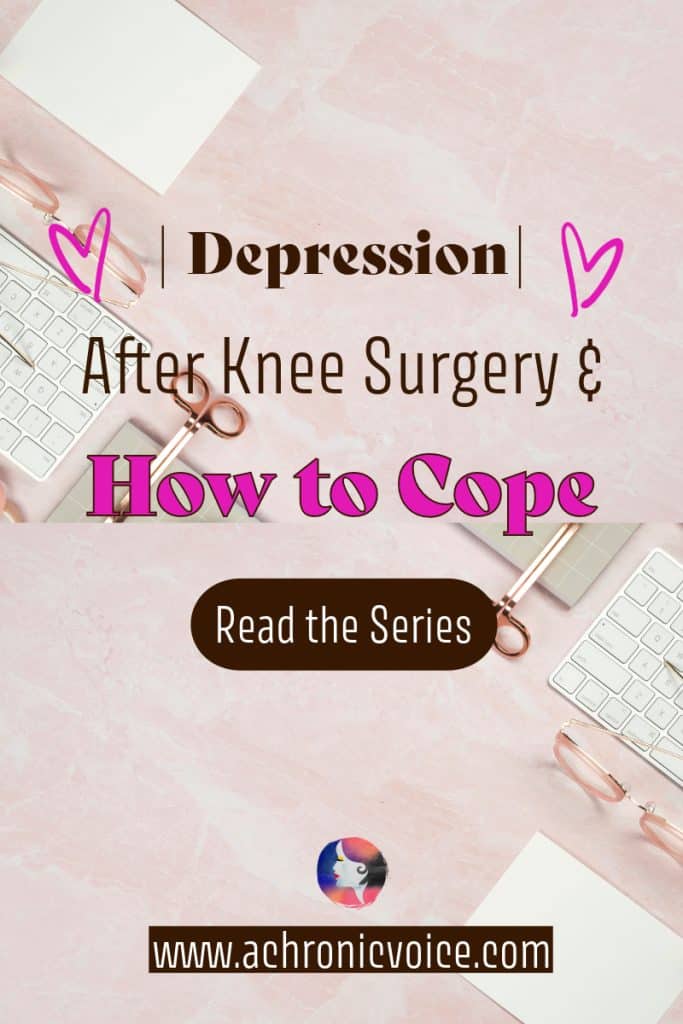
-
References:
- Niazi, A. K., & Niazi, S. K. (2011). Mindfulness-based stress reduction: a non-pharmacological approach for chronic illnesses. North American journal of medical sciences, 3(1), 20.
- Kelly IV, J. D. (2016). Your best life: breaking the cycle: the power of gratitude. Clinical Orthopaedics and Related Research®, 474(12), 2594-2597.
- Tsai, S., Crawford, E., & Strong, J. (2018). Seeking virtual social support through blogging: a content analysis of published blog posts written by people with chronic pain. Digital health, 4, 2055207618772669.
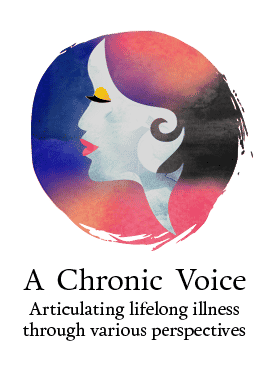
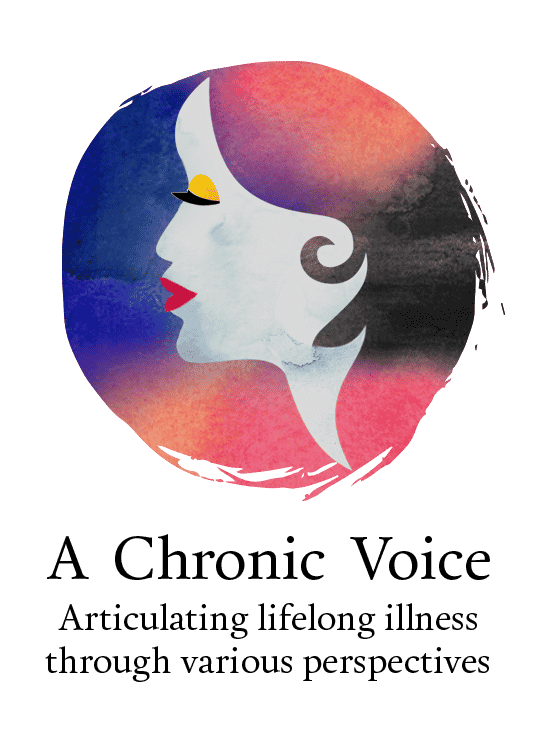










This is an absolutely fantastic post. You have so many great ideas to keep our minds occupied when we need to spend a lot of time in bed. Your list includes such a wide range of activities that it would be difficult for someone not to find something they could do. I find I need to have several things I can turn to. I do like to try to work on my blog in some way. I might not be able to write a full post, but I can jot down ideas, or work on social media posts. Sometimes my ‘meds’ brain can’t focus on that, so I might just watch something on television that doesn’t need too much attention or play a game on my phone.
I really love your suggestions.
Thank you so much Liz, for going through this extremely long post haha! I tried to cover as many bases as I could because well, spending so much time in bed is frustrating to say the least, isn’t it? Sending lots of love to you!
What a great list of ideas Sheryl!
I also feel the benefit of digital decluttering when I’m not able to physically declutter. I love that I’m still able to accomplish a form of tidying. And yes, watching TV doesn’t have to be mindless—it can be such a great opportunity for learning.
I hope you’re recovering well and seeing improvement. So glad you’re up to blogging again! Take cade of yourself!
PS If you’re interested in documentaries, I wrote a post about my 15 favorites I’ve watched recently:
https://cassiecreley.com/15-shows-about-fascinating-people-and-places/
Thanks, Cassie! Yes, these little annoying tasks can be highly productive too especially in the long run! I’m recovering okay…slowly! Thanks for sharing!
HI Sheryl, what an awesome list! I’ve never seen one more complete, honestly! I have to say that coloring is one of my favorite things to do when I am recovering from something or if I am feeling anxious or stressed. Blogging too. For coloring I have an iPad and Apple Pencil and my favorite app is the Color Therapy app. I like to color old school as well but I tend to mostly use my iPad. I will have to check out some of the other things on your list as well. I am hoping you are healing well from your surgery if you had one. I can’t tell if this was from past experience or a recent surgery but either way, thanks for the list!
Hi Kadie, thank you, I am glad the resource is of some use! I hope it helps someone out there who’s stuck in bed too 🙂 I had my knees ruptured last year and am still recovering from it, really. For the first half of the year I was bed bound and disabled.
Ooh… I might have to check out your suggestion. I didn’t think it was possible to colour nicely on iPad too! I will update the site when I can with your suggest as well! Thank you so much!
Thank you Sheryl for such a resource – the time and effort that has gone into sharing all this is something many people like me will be grateful for. There’s so much to learn here.
Thank you also for including Toby – I’m sure he’s wagging his tail in heaven knowing he’s still thought of and loved.
Big hugs and I hope you recover well from the ordeal you’ve experienced.
Thank you my dear friend! I hope you’re coping okay, and reach out to our little group whenever you need to. Sending good thoughts and love 🙂